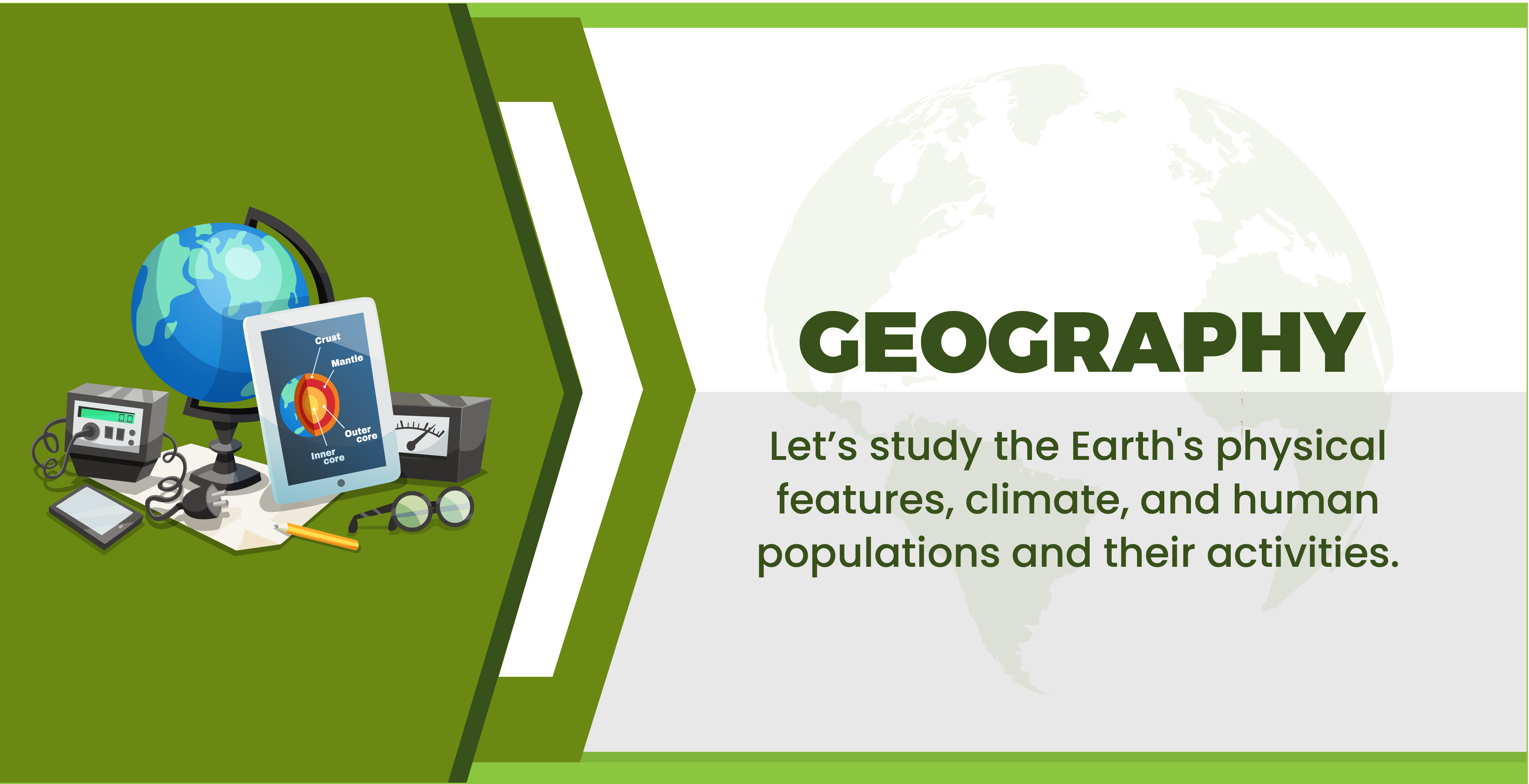
- Tech-MAME-GENERAL TECHNOLOGY
- Tech-MAME-MANUFACTRING/ PRODUCTION TECHNOLOGY
- Tech-MAME-MATERIAL SCIENCE
- Tech-WP-Automation
- Tech-Electronics-NUMERICAL CIRCUIT
- Tech-MM- PLUMBING PROJECT MANAGEMENT
- Tech-MM- WATER SUPPLY AND HYDRAULICS
- Tech-MM- WATER DISTRIDUTION
- Tech-MM- DRAINAGE PROCESSES
- Tech-MM- FLUID MACHANICS
- Tech-MM- APPLIED MECHANICS
- Tech-MM- CONSTRUCTION DRAWING
- Tech-MM- Trade Calculation
- Tech-PHIS-PLUMBING PROJECT MANAGEMENT
- Tech-PHIS-WATER SUPPLY AND HYDRAULICS
- Tech-PHIS-WATER DISTRIBUTION
- Tech-PHIS-DRAINAGE PROCESSES
- Tech-PHIS-FLUID MECHANICS
- Tech-PHIS-APPLIED MECHANICS
- Tech-PHIS-TECHNICAL DRAWING
- Tech-PHIS-CONSTRUCTION DRAWING
- Tech-Plumbing Hydraulics- PLUMBING PROJECT MANAGEMENT
- Tech-Plumbing Hydraulics- WATER SUPPLY AND HYDRAULICS
- Tech-Plumbing Hydraulics- WATER DISTRIDUTION
- Tech-Plumbing Hydraulics- DRAINAGE PROCESSES
- Tech-Plumbing Hydraulics- FLUID MACHANICS
- Tech-Plumbing Hydraulics- APPLIED MECHANICS
- Tech-Plumbing Hydraulics- TECHNICAL DRAWING
- Tech-Plumbing Hydraulics- CONSTRUCTION DRAWING
- TECH-Plumbing Installation-PLUMBING PROJECT MANAGEMENT
- TECH-Plumbing Installation-WATER SUPPLY AND HYDRAULICS
- TECH-Plumbing Installation-WATER DISTRIBUTION
- TECH-Plumbing Installation-DRAINAGE PROCESSES
- TECH-Plumbing Installation-FLUID MACHANICS
- TECH-Plumbing Installation-APPLIED SCIENCES
- TECH-Plumbing Installation-TECHNICAL DRAWING
- TECH-Plumbing Installation-CONSTRUCTION DRAWING
- TECH-MKT-REGULATION
- TECH-MKT-LOG PROCESSES
- TECH-MKTG-WOOD STUDY
- Tech-MWIP-WORKSHOP PRACTICE
- Tech-MWIP-SHEET METAL PATTERN DEVELOPMENT
- Tech-MWIP-WORKSHOP PROCESSES PRACTICE AND MATERIALS
- Tech-MWIP-TECHNICAL DRAWING
- Tech-WF-PRACTICAL WORKS
- Tech-WF-METALLURGY
- Tech-WF-TECHNICAL DRAWING
- Tech-WF-Technology
- Tech-WF-MARKING-OUT
- Tech-WF-PRACTICAL WORKS
- Tech-WF-TECHNICAL DRAWING
- Tech-WF-TECHNOLOGY
- Tech-WF-MARKING-OUT
- Tech-WF-SHEET METAL PATTERN DEVELOPMENT
- Tech-WF-WORKSHOP PROCESSES PRACTICE AND MATERIALS
- Tech-WF-Tech Drawing
- Tech-WPR-REGULATION
- Tech-WPR-LOG PROCESSES
- Tech-WPR-WOOD STUDY
- Tech-MAME-NUMERICAL CONTROL MACHINING
- Tech-MAME-PROCESS PLANNING
- Tech-AC & Refrigeration-WORKSHOP PRACTICE
- Tech-AC & Refrigeration-TECNHOLOGY
- Tech-AC & Refrigeration-APPLIED SCIENCES
- Tech-AC & Refrigeration-E Circuits
- Tech-MAME-AUTOMATION
- Tech-MAME-MAINTENANCE
- Tech-MAME-MAINTENANCE OF PNEUMATIC AND HYDRAULIC SYSTEMS
- Tech-Tech-WP-MAINTENANCE-AUTOMATION
- Tech-WP-MAINTENANCE
- Tech-WP-MAINTENANCE OF PNEUMATIC AND HYDRAULIC SYSTEMS
- Tech-BMA-AUTOMATION
- Tech-BMA-MAINTENANCE
- Tech-BMA-MAINTENANCE OF PNEUMATIC AND HYDRAULIC SYSTEMS
- Tech-MEME-AUTOMATION
- Tech-MEME-MAINTENANCE
- Tech-MEME-MAINTENANCE OF PNEUMATIC AND HYDRAULIC SYSTEMS
-
Upper Sixth Tech
- Tech-MAME-GENERAL TECHNOLOGY
- Tech-MAME-MANUFACTRING/ PRODUCTION TECHNOLOGY
- Tech-MAME-MATERIAL SCIENCE
- Tech-WP-Automation
- Tech-Electronics-NUMERICAL CIRCUIT
- Tech-MM- PLUMBING PROJECT MANAGEMENT
- Tech-MM- WATER SUPPLY AND HYDRAULICS
- Tech-MM- WATER DISTRIDUTION
- Tech-MM- DRAINAGE PROCESSES
- Tech-MM- FLUID MACHANICS
- Tech-MM- APPLIED MECHANICS
- Tech-MM- CONSTRUCTION DRAWING
- Tech-MM- Trade Calculation
- Tech-PHIS-PLUMBING PROJECT MANAGEMENT
- Tech-PHIS-WATER SUPPLY AND HYDRAULICS
- Tech-PHIS-WATER DISTRIBUTION
- Tech-PHIS-DRAINAGE PROCESSES
- Tech-PHIS-FLUID MECHANICS
- Tech-PHIS-APPLIED MECHANICS
- Tech-PHIS-TECHNICAL DRAWING
- Tech-PHIS-CONSTRUCTION DRAWING
- Tech-Plumbing Hydraulics- PLUMBING PROJECT MANAGEMENT
- Tech-Plumbing Hydraulics- WATER SUPPLY AND HYDRAULICS
- Tech-Plumbing Hydraulics- WATER DISTRIDUTION
- Tech-Plumbing Hydraulics- DRAINAGE PROCESSES
- Tech-Plumbing Hydraulics- FLUID MACHANICS
- Tech-Plumbing Hydraulics- APPLIED MECHANICS
- Tech-Plumbing Hydraulics- TECHNICAL DRAWING
- Tech-Plumbing Hydraulics- CONSTRUCTION DRAWING
- TECH-Plumbing Installation-PLUMBING PROJECT MANAGEMENT
- TECH-Plumbing Installation-WATER SUPPLY AND HYDRAULICS
- TECH-Plumbing Installation-WATER DISTRIBUTION
- TECH-Plumbing Installation-DRAINAGE PROCESSES
- TECH-Plumbing Installation-FLUID MACHANICS
- TECH-Plumbing Installation-APPLIED SCIENCES
- TECH-Plumbing Installation-TECHNICAL DRAWING
- TECH-Plumbing Installation-CONSTRUCTION DRAWING
- TECH-MKT-REGULATION
- TECH-MKT-LOG PROCESSES
- TECH-MKTG-WOOD STUDY
- Tech-MWIP-WORKSHOP PRACTICE
- Tech-MWIP-SHEET METAL PATTERN DEVELOPMENT
- Tech-MWIP-WORKSHOP PROCESSES PRACTICE AND MATERIALS
- Tech-MWIP-TECHNICAL DRAWING
- Tech-WF-PRACTICAL WORKS
- Tech-WF-METALLURGY
- Tech-WF-TECHNICAL DRAWING
- Tech-WF-Technology
- Tech-WF-MARKING-OUT
- Tech-WF-PRACTICAL WORKS
- Tech-WF-TECHNICAL DRAWING
- Tech-WF-TECHNOLOGY
- Tech-WF-MARKING-OUT
- Tech-WF-SHEET METAL PATTERN DEVELOPMENT
- Tech-WF-WORKSHOP PROCESSES PRACTICE AND MATERIALS
- Tech-WF-Tech Drawing
- Tech-WPR-REGULATION
- Tech-WPR-LOG PROCESSES
- Tech-WPR-WOOD STUDY
- Tech-MAME-NUMERICAL CONTROL MACHINING
- Tech-MAME-PROCESS PLANNING
- Tech-AC & Refrigeration-WORKSHOP PRACTICE
- Tech-AC & Refrigeration-TECNHOLOGY
- Tech-AC & Refrigeration-APPLIED SCIENCES
- Tech-AC & Refrigeration-E Circuits
- Tech-MAME-AUTOMATION
- Tech-MAME-MAINTENANCE
- Tech-MAME-MAINTENANCE OF PNEUMATIC AND HYDRAULIC SYSTEMS
- Tech-Tech-WP-MAINTENANCE-AUTOMATION
- Tech-WP-MAINTENANCE
- Tech-WP-MAINTENANCE OF PNEUMATIC AND HYDRAULIC SYSTEMS
- Tech-BMA-AUTOMATION
- Tech-BMA-MAINTENANCE
- Tech-BMA-MAINTENANCE OF PNEUMATIC AND HYDRAULIC SYSTEMS
- Tech-MEME-AUTOMATION
- Tech-MEME-MAINTENANCE
- Tech-MEME-MAINTENANCE OF PNEUMATIC AND HYDRAULIC SYSTEMS
- COMM-ACC, SAC, TIMS-OHADA Accounting Plan
- COMM-ACC, SAC, TIMS-OHADA Chart of Accounts
- COMM-ACC, SAC, TIMS-OHADA Chart of Accounts
- COMM-ACC, SAC, TIMS-OHADA Accounting Plan
- Tech MAME Welding
- Tech-MWIP-Technology
- Tech-MAME-PRACTICAL TECHNOLOGY
- Tech-MAME-PRACTICAL TECHNOLOGY
- Tech-MAME-MATERIAL SCIENCE
- Comm ACC-Computer - Aided Management
- Comm Information Processing
- Comm Mktg Dig Mktg Prac
- Comm Mktg Dig Mktg
- Comm Mktg Mktg Skills
- Comm Mktg Prof Mktg Prac
- Comm Acc Comp Aided Acc
- Comm Acc Corp Acc
- Comm Acc Cost Acc
- Comm TST Maths
- Comm ACC, SAC, TIMS OHADA Chart of Accounts
- Comm ACC, SAC, TIMS OHADA Chart of Accounts
- Comm ACC, SAC, TIMS OHADA Chart of Accounts
- Comm ACC, SAC, TIMS OHADA Accounting Plan
- Comm ACC, SAC, TIMS OHADA Accounting Plan
- Comm ACC, SAC, TIMS OHADA Accounting Plan
- Tech MM Practical
- Tech MM Plumbing Maintenance
- Tech MM Plumbing Technology
- Tech MM Technical Drawing
- Tech PHIS Practical
- Tech PHIS Plumbing Maintenance
- Tech PHIS Plumbing Technology
- Tech PHIS Technical Drawing
- Tech PH Practical
- Tech PH Plumbing Maintenance
- Tech PH Plumbing Technology
- Tech PH Technical Drawing
- Tech PLIN Practical
- Tech PLIN Plumbing Maintenance
- Tech PLIN Plumbing Technology
- Tech PLIN Technical Drawing
- Tech MWIP Workshop Practice
- Tech MWIP Sheet Metal Pattern Development
- Tech MWIP Technology
- Tech MWIP Technical Drawing
- Tech-MM- Practice
- Tech-MM- Plumbing Maintenance
- Tech-MM- Plumbing Tech
- Tech-MM- Drawing
- Tech-PHIS- Trade Calculation
- Tech-PHIS- Practical
- Tech-PHIS- Plumbing Maintenance
- Tech-PHIS- Plumbing Tech
- Tech-PHIS- Drawing
- Tech-Plumbing Hydraulics- Trade Calculation
- Tech-Plumbing Hydraulics- Practical
- Tech-Plumbing Hydraulics- Plumbing Maintenance
- Tech-Plumbing Hydraulics- Plumbing Tech
- Tech-Plumbing Hydraulics- Drawing
- Tech WF Workshop Practice
- Tech-PLIN-Trade Calculation
- Tech WF Sheet Metal Pattern Development
- Tech WF Technology
- Tech-PLIN- Practical
- Tech WF Technical Drawing
- Tech SM Practical Works
- Tech-PLIN- Plumbing Maintenance
- Tech-PLIN- Plumbing Tech
- Tech-PLIN- Drawing
- Tech-Word Eng-Wood Study
- Tech SM Technical Drawing
- Tech SM Technology
- Tech-Word Eng-Log Processes
- Tech SM Marking-Out
- Tech-Word Processing-Log Processes
- Tech-Word Processing-Wood Study
- Tech MAME Practical Technology
- Tech MAME Manufacturing/ Production Technology
- Tech MAME Material Science
- Tech-MWIP-Workshop Practice
- Tech ELME Technology of Equipment & Electrical Machines
- Tech ELME Electrical Circuits
- Tech AC Electrical Machines
- Tech AC Electrical Circuits
- Tech AC ELECTRICAL TECHNOLOGY & DIAGRAM
- Tech CLIN Sewing
- Tech CLIN Textile Technology
- Tech BEST Textile Technology
- Tech BEST Sewing
- Tech All Specialty Physical Science
- Tech All Specialty Quantity Hygiene Safety & Environment
- Tech TI Geography
- Tech TI Entrepreneurship
- Tech TI Citizenship
- Tech TI Computer Science
- Tech TI French
- Tech TI Eng
-
Form 3 Tech
- Tech MAME Welding
- Tech MM Practical
- Tech MM Plumbing Maintenance
- Tech MM Plumbing Technology
- Tech MM Technical Drawing
- Tech PHIS Practical
- Tech PHIS Plumbing Maintenance
- Tech PHIS Plumbing Technology
- Tech PHIS Technical Drawing
- Tech PH Practical
- Tech PH Plumbing Maintenance
- Tech PH Plumbing Technology
- Tech PH Technical Drawing
- Tech PLIN Practical
- Tech PLIN Plumbing Maintenance
- Tech PLIN Plumbing Technology
- Tech PLIN Technical Drawing
- Tech MWIP Workshop Practice
- Tech MWIP Sheet Metal Pattern Development
- Tech MWIP Technology
- Tech MWIP Technical Drawing
- Tech WF Workshop Practice
- Tech WF Sheet Metal Pattern Development
- Tech WF Technology
- Tech WF Technical Drawing
- Tech SM Practical Works
- Tech SM Technical Drawing
- Tech SM Technology
- Tech SM Marking-Out
- Tech MAME Practical Technology
- Tech MAME Manufacturing/ Production Technology
- Tech MAME Material Science
- Tech ELME Technology of Equipment & Electrical Machines
- Tech ELME Electrical Circuits
- Tech AC Electrical Machines
- Tech AC Electrical Circuits
- Tech AC ELECTRICAL TECHNOLOGY & DIAGRAM
- Tech CLIN Sewing
- Tech CLIN Textile Technology
- Tech BEST Textile Technology
- Tech BEST Sewing
- Tech All Specialty Physical Science
- Tech All Specialty Quantity Hygiene Safety & Environment
- Tech TI Geography
- Tech TI Entrepreneurship
- Tech TI Citizenship
- Tech TI Computer Science
- Tech TI French
- Tech TI Eng
- Tech MM Practical
- Tech MM Plumbing Maintenance
- Tech MM Plumbing Technology
- Tech MM Technical Drawing
- Tech-MWIP-SM Pattern Dev't
- Tech PHIS Practical
- Tech PHIS Plumbing Maintenance
- Tech PHIS Plumbing Technology
- Tech-MWIP-TECHNICAL DRAWING
- Tech-WF-Workshop Practice
- Tech-WF-SM Pattern Dev't
- Tech-WF-Technology
- Comm TIMS Comp Aided Acc
- Tech-WF-Tech Drawing
- Tech PHIS Technical Drawing
- Tech PH Practical
- Comm TIMS Info Mgt Sys
- Comm TIMS Principles & Prac of Taxation
- Tech PH Plumbing Maintenance
- Tech PH Plumbing Technology
- Comm Stenotypy Applied Stenography
- Tech-MAME-Welding
- Tech PH Technical Drawing
- Tech PLIN Practical
- Tech-MAME-Numerical Control Machining
- Tech PLIN Plumbing Maintenance
- Tech PLIN Plumbing Technology
- Tech-MAME-Process Planning
- Tech PLIN Technical Drawing
- Tech MWIP Workshop Practice
- Tech MWIP Sheet Metal Pattern Development
- Tech-AC & Refrigeration-E Machines
- Tech MWIP Technology
- Tech-AC & Refrigeration-E Circuits
- Tech MWIP Technical Drawing
- Tech-AC & Refrigeration-ET and Diagram
- Comm Stenotypy Transcription Technique
- Tech-CLIN-Sewing
- Comm Stenotypy Transcription Theory
- Comm Stenotypy Stenotypy Meths & Prin
- Comm SAC Off Tech
- Tech-CLIN-Textile Tech
- Comm SAC Off Admin
- Comm HEC Soc Life
- Comm HEC Fam Life Educ & Gerontology
- Comm HEC Res Mgt on Home Studio & Soc Life
- Comm HEC Cat Mgt & Diet's
- Tech-BEST-Textile Tech
- Tech-BEST-SEWING
- Tech-All Specialties-QHSE
- Tech-All Specialties-PHYSICAL SCIENCES
- Tech WF Workshop Practice
- Tech WF Sheet Metal Pattern Development
- Tech TI A.Maths
- Tech WF Technology
- Tech WF Technical Drawing
- Tech TI Economics
- Tech SM Practical Works
- Comm Mktg Dig Mktg Prac
- Tech SM Technical Drawing
- Tech TI Pure Maths
- Comm Mktg Dig Mktg
- Tech SM Technology
- Tech SM Marking-Out
- Comm Mktg Mktg Skills
- Tech TI History
- Comm Mktg Prof Mktg Prac
- Tech MAME Practical Technology
- Tech MAME Manufacturing/ Production Technology
- Tech MAME Material Science
- Comm Acc Comp Aided Acc
- Tech ELME Technology of Equipment & Electrical Machines
- Comm Acc Corp Acc
- Comm Acc Mgt Acc
- Tech ELME Electrical Circuits
- Tech AC Electrical Circuits
- Tech AC ELECTRICAL TECHNOLOGY & DIAGRAM
- Tech CLIN Textile Technology
- Tech CLIN Sewing
- Tech BEST Textile Technology
- Tech BEST Sewing
- Tech All Specialty Quantity Hygiene Safety & Environment
- Comm Tourism & HEC Comp - Aid Mgt
- Tech TI Geography
- Comm Acc & Tims Int Fin Acc
- Comm Acc & Tims Ohada Fin Acc
- Comm TST Prof Fr
- Comm TST Prof Eng
- Tech TI Computer Science
- Tech TI History
- Tech TI Citizenship
- Tech TI French
- Tech TI Eng
- Comm TST Prof Leg
- Comm TST Comm & Fin.
- Tech TI Geo
- Tech TI Citizenship
- Tech TI Computer SC
- Comm TST Bus. Mgt
- Comm TST Bus Maths
- Comm TST Ent
- Tech TI French
- Comm TST Econs
- Tech TI Eng
- Comm TST Pure Maths
-
Form 5 Technical
- Tech-MWIP-Technology
- Tech-MAME-PRACTICAL TECHNOLOGY
- Tech-MM- Practice
- Tech-MM- Plumbing Maintenance
- Tech-MM- Plumbing Tech
- Tech-MM- Drawing
- Tech-PHIS- Trade Calculation
- Tech-PHIS- Practical
- Tech-PHIS- Plumbing Maintenance
- Tech-PHIS- Plumbing Tech
- Tech-PHIS- Drawing
- Tech-Plumbing Hydraulics- Trade Calculation
- Tech-Plumbing Hydraulics- Practical
- Tech-Plumbing Hydraulics- Plumbing Maintenance
- Tech-Plumbing Hydraulics- Plumbing Tech
- Tech-Plumbing Hydraulics- Drawing
- Tech-PLIN-Trade Calculation
- Tech-PLIN- Practical
- Tech-PLIN- Plumbing Maintenance
- Tech-PLIN- Plumbing Tech
- Tech-PLIN- Drawing
- Tech-Word Eng-Wood Study
- Tech-Word Eng-Log Processes
- Tech-Word Processing-Log Processes
- Tech-Word Processing-Wood Study
- Tech-MWIP-Workshop Practice
- Tech-MWIP-SM Pattern Dev't
- Tech-MWIP-TECHNICAL DRAWING
- Tech-WF-Workshop Practice
- Tech-WF-SM Pattern Dev't
- Tech-WF-Technology
- Tech-WF-Tech Drawing
- Tech-MAME-Welding
- Tech-MAME-Numerical Control Machining
- Tech-MAME-Process Planning
- Tech-AC & Refrigeration-E Machines
- Tech-AC & Refrigeration-E Circuits
- Tech-AC & Refrigeration-ET and Diagram
- Tech-CLIN-Sewing
- Tech-CLIN-Textile Tech
- Tech-BEST-Textile Tech
- Tech-BEST-SEWING
- Tech-All Specialties-QHSE
- Tech-All Specialties-PHYSICAL SCIENCES
- Tech TI A.Maths
- Tech TI Economics
- Tech TI Pure Maths
- Tech TI History
- Tech TI Geo
- Tech TI Citizenship
- Tech TI Computer SC
- Tech TI French
- Tech TI Eng
-
Form 2 Tech
- Tech MM Practical
- Tech MM Plumbing Maintenance
- Tech MM Plumbing Technology
- Tech MM Technical Drawing
- Tech PHIS Practical
- Tech PHIS Plumbing Maintenance
- Tech PHIS Plumbing Technology
- Tech PHIS Technical Drawing
- Tech PH Practical
- Tech PH Plumbing Maintenance
- Tech PH Plumbing Technology
- Tech PH Technical Drawing
- Tech PLIN Practical
- Tech PLIN Plumbing Maintenance
- Tech PLIN Plumbing Technology
- Tech PLIN Technical Drawing
- Tech MWIP Workshop Practice
- Tech MWIP Sheet Metal Pattern Development
- Tech MWIP Technology
- Tech MWIP Technical Drawing
- Tech WF Workshop Practice
- Tech WF Sheet Metal Pattern Development
- Tech WF Technology
- Tech WF Technical Drawing
- Tech SM Practical Works
- Tech SM Technical Drawing
- Tech SM Technology
- Tech SM Marking-Out
- Tech MAME Practical Technology
- Tech MAME Manufacturing/ Production Technology
- Tech MAME Material Science
- Tech ELME Technology of Equipment & Electrical Machines
- Tech ELME Electrical Circuits
- Tech AC Electrical Circuits
- Tech AC ELECTRICAL TECHNOLOGY & DIAGRAM
- Tech CLIN Textile Technology
- Tech CLIN Sewing
- Tech BEST Textile Technology
- Tech BEST Sewing
- Tech All Specialty Quantity Hygiene Safety & Environment
- Tech TI Geography
- Tech TI Computer Science
- Tech TI History
- Tech TI Citizenship
- Tech TI French
- Tech TI Eng
- Tech-MM- Practice
- Tech-MM- Plumbing Maintenance
- Tech-MM- Plumbing Tech
- Tech-MM- Tech Drawing
- Tech-PHIS- Practical
- Tech-PHIS- Plumbing Maintenance
- Tech-PHIS- Plumbing Tech
- Tech MAME Practical Technology
- Tech-PHIS- Tech Drawing
- Tech MAME Manufacturing/ Production Technology
- Tech MAME Material Science
- Tech-Plumbing Hydraulics- Practical
- Tech-Plumbing Hydraulics- Plumbing Maintenance
- Tech-Plumbing Hydraulics- Plumbing Tech
- Tech-Plumbing Hydraulics- Tech Drawing
- Tech-PLIN- Practical
- Tech-PLIN- Plumbing Maintenance
- Tech-PLIN- Plumbing Tech
- Tech-PLIN-Tech Drawing
- Tech-MWIP-Tech Drawing
- Tech-MWIP-Technology
- Tech-MWIP-SM Pattern Dev't
- Tech-MWIP-Workshop Practice
- Tech-WF-Workshop Practice
- Tech-WF-SM Pattern Dev't
- Tech-WF-Technology
- Tech MM Technical Drawing
- Tech-WF-Tech Drawing
- Tech MM Technology
- Tech PHIS Building & Construction Technology
- Tech PHIS Technical Drawing
- Tech PH Technical Drawing
- Tech PH Building & Construction Technology
- Tech-SM-Practical Workss
- Tech PLIN Building & Construction Technology
- Tech-SM-Tech Drawing
- Tech PLIN Technical Drawing
- Tech-SM-Technology
- Tech MWIP Sheet Metal Pattern Development
- Tech-SM-Marking-Out
- Tech MWIP Technology
- Tech-MAME-Welding
- Tech MWIP Technical Drawing
- Tech MWIP Workshop Practice
- Tech-ELME-Tech of Equip't & E Machines
- Tech WF Workshop Practice
- Tech-AC & Refrigeration-E Machines
- Tech WF Sheet Metal Pattern Development
- Tech-AC & Refrigeration-E Circuits
- Tech WF Technology
- Tech-AC & Refrigeration-ET and Diagram
- Tech WF Technical Drawing
- Tech-CLIN-Sewing
- Tech-CLIN-Textile Tech
- Tech SM Practical Works
- Tech-BEST-Textile Tech
- Tech SM Technical Drawing
- Tech-BEST-SEWING
- Tech SM Technology
- Tech-All Specialties-PHYSICAL SCIENCES
- Tech SM Marking-Out
- Tech-All Specialties-QHSE
- Tech TI A.Maths
- Tech AC Electrical Circuits
- Tech TI Entrepreneurship
- Tech AC ELECTRICAL TECHNOLOGY & DIAGRAM
- Tech TI Pure Maths
- Tech TI History
- Tech TI Geo
- Tech CLIN Sewing
- Tech CLIN Textile Technology
- Tech TI Citizenship
- Tech BEST Textile Technology
- Tech TI Computer SC
- Tech BEST Sewing
- Tech All Specialty Quantity Hygiene Safety & Environment
- Tech TI French
- Tech TI Eng
- Tech TI Geography
- Tech TI Computer Science
-
Form 4 Technical
- Tech-MAME-PRACTICAL TECHNOLOGY
- Tech-MAME-MATERIAL SCIENCE
- Tech-MM- Practice
- Tech-MM- Plumbing Maintenance
- Tech-MM- Plumbing Tech
- Tech-MM- Tech Drawing
- Tech-PHIS- Practical
- Tech-PHIS- Plumbing Maintenance
- Tech-PHIS- Plumbing Tech
- Tech-PHIS- Tech Drawing
- Tech-Plumbing Hydraulics- Practical
- Tech-Plumbing Hydraulics- Plumbing Maintenance
- Tech-Plumbing Hydraulics- Plumbing Tech
- Tech-Plumbing Hydraulics- Tech Drawing
- Tech-PLIN- Practical
- Tech-PLIN- Plumbing Maintenance
- Tech-PLIN- Plumbing Tech
- Tech-PLIN-Tech Drawing
- Tech-MWIP-Tech Drawing
- Tech-MWIP-Technology
- Tech-MWIP-SM Pattern Dev't
- Tech-MWIP-Workshop Practice
- Tech-WF-Workshop Practice
- Tech-WF-SM Pattern Dev't
- Tech-WF-Technology
- Tech-WF-Tech Drawing
- Tech-SM-Practical Workss
- Tech-SM-Tech Drawing
- Tech-SM-Technology
- Tech-SM-Marking-Out
- Tech-MAME-Welding
- Tech-ELME-Tech of Equip't & E Machines
- Tech-AC & Refrigeration-E Machines
- Tech-AC & Refrigeration-E Circuits
- Tech-AC & Refrigeration-ET and Diagram
- Tech-CLIN-Sewing
- Tech-CLIN-Textile Tech
- Tech-BEST-Textile Tech
- Tech-BEST-SEWING
- Tech-All Specialties-PHYSICAL SCIENCES
- Tech-All Specialties-QHSE
- Tech TI A.Maths
- Tech TI Entrepreneurship
- Tech TI Pure Maths
- Tech TI History
- Tech TI Geo
- Tech TI Citizenship
- Tech TI Computer SC
- Tech TI French
- Tech TI Eng
- Tech TI History
- Tech TI Citizenship
- Tech TI French
- Tech TI Eng
-
Form 1 Tech
- Tech MAME Practical Technology
- Tech MAME Manufacturing/ Production Technology
- Tech MAME Material Science
- Tech MM Technical Drawing
- Tech MM Technology
- Tech PHIS Building & Construction Technology
- Tech PHIS Technical Drawing
- Tech PH Technical Drawing
- Tech PH Building & Construction Technology
- Tech PLIN Building & Construction Technology
- Tech PLIN Technical Drawing
- Tech MWIP Sheet Metal Pattern Development
- Tech MWIP Technology
- Tech MWIP Technical Drawing
- Tech MWIP Workshop Practice
- Tech WF Workshop Practice
- Tech WF Sheet Metal Pattern Development
- Tech WF Technology
- Tech WF Technical Drawing
- Tech SM Practical Works
- Tech SM Technical Drawing
- Tech SM Technology
- Tech SM Marking-Out
- Tech AC Electrical Circuits
- Tech AC ELECTRICAL TECHNOLOGY & DIAGRAM
- Tech CLIN Sewing
- Tech CLIN Textile Technology
- Tech BEST Textile Technology
- Tech BEST Sewing
- Tech All Specialty Quantity Hygiene Safety & Environment
- Tech TI Geography
- Tech TI Computer Science
- Tech TI History
- Tech TI Citizenship
- Tech TI French
- Tech TI Eng
- Comm SAC Office Technology
- Comm SAC Office Administration
- Comm HEC Family Life Education & Gerontology
- Comm HEC Resource Mgt on Home Studies
- Comm HEC Food Nutrition and Health
- Comm MKTG Digital Marketing Practice
- Comm MKTG Digital Marketing
- Comm MKTG Product Mastery
- Comm MKTG Sales methods & Communication.
- Comm ACC Computer - Aided Mgt
- Comm ACC International Financial Accounting
- Comm ACC OHADA Financial Accounting
- Comm Any TST Professional Communication Techniques
- Comm Any TST Law and Government
- Comm Any TST Commerce
- Comm Any TST Business Maths
- Comm Any TST Entrepreneurship
- Comm Any TST Computer - Aided Mgt
- Comm ACC & ACT OHADA Financial Accounting
- Comm TST Economics
- Comm TST French
- Comm TST Pure Maths
- Comm TST Eng
-
Form 3 Comm
- Comm ACC, SAC, TIMS OHADA Chart of Accounts
- Comm ACC, SAC, TIMS OHADA Accounting Plan
- Comm SAC Office Technology
- Comm SAC Office Administration
- Comm HEC Family Life Education & Gerontology
- Comm HEC Resource Mgt on Home Studies
- Comm HEC Food Nutrition and Health
- Comm MKTG Digital Marketing Practice
- Comm MKTG Digital Marketing
- Comm MKTG Product Mastery
- Comm MKTG Sales methods & Communication.
- Comm ACC Computer - Aided Mgt
- Comm ACC International Financial Accounting
- Comm ACC OHADA Financial Accounting
- Comm Any TST Professional Communication Techniques
- Comm Any TST Law and Government
- Comm Any TST Commerce
- Comm Any TST Business Maths
- Comm Any TST Entrepreneurship
- Comm Any TST Computer - Aided Mgt
- Comm ACC & ACT OHADA Financial Accounting
- Comm TST Economics
- Comm TST French
- Comm TST Pure Maths
- Comm TST Eng
- Comm HEC Family Life Education & Gerontology
- Comm HEC Food Nutrition and Health
- Comm Office Practice
- Comm ICT
- Comm Economic Geography
- Comm Information Processing
- Comm Legislation
- Comm Introduction to Marketing
- Comm Accounting
- Comm TST Home Economics
- Comm TST History
- Comm TST Cit
- Comm TST Lit
- Comm TST Maths
- Comm TST French
- Comm TST Eng
- Comm HEC Resource Mgt on Home Studies
-
Form 2 Comm
- Comm ACC, SAC, TIMS OHADA Chart of Accounts
- Comm ACC, SAC, TIMS OHADA Accounting Plan
- Comm HEC Family Life Education & Gerontology
- Comm HEC Food Nutrition and Health
- Comm Office Practice
- Comm ICT
- Comm Economic Geography
- Comm Information Processing
- Comm Legislation
- Comm Introduction to Marketing
- Comm Accounting
- Comm TST Home Economics
- Comm TST History
- Comm TST Cit
- Comm TST Lit
- Comm TST Maths
- Comm TST French
- Comm TST Eng
- Comm HEC Resource Mgt on Home Studies
- Comm HEC Family Life Education & Gerontology
- Comm HEC Resource Mgt on Home Studies
- Comm HEC Food Nutrition and Health
- Comm SAC-Office Technology
- Comm SAC-Office Administration
- Comm HEC-Social Life
- Comm HEC-Family Life Education and Gerontology
- Comm HEC-RM on Home Studies
- Comm Introduction to Marketing
- Comm HEC-Food Nutrition and Health
- Comm MKTG-Digital Marketing Practice
- Comm MKTG-Digital Marketing
- Comm MKTG-Product Mastery
- Comm office Practice
- Comm MKTG-Sales methods and Comm
- Comm ACC-Computer - Aided Management
- Comm Econs Geo
- Comm ACC-I.F Accounting
- Comm ACC-OHADA Financial Accounting
- Comm ACC-OHADA Financial Reporting
- Comm ICT
- Comm ACC & SAC OHADA Financial Accounting
- Comm TST-Proff Comm Techniques
- Comm TST-Law and Gov't
- Comm TST-Commerce
- Comm TST-B.Maths
- Comm TST-Entrepreneurship
- Comm TST-Computer - Aided Management
- Comm Legislation
- Comm TST Econs
- Comm TST Pure Maths
- Comm Accounting
- Comm TST French
- Comm TST Eng
- Comm TIMS Comp Aided Acc
-
Form 4 Comm
- COMM-ACC, SAC, TIMS-OHADA Chart of Accounts
- COMM-ACC, SAC, TIMS-OHADA Accounting Plan
- Comm SAC-Office Technology
- Comm SAC-Office Administration
- Comm HEC-Social Life
- Comm HEC-Family Life Education and Gerontology
- Comm HEC-RM on Home Studies
- Comm HEC-Food Nutrition and Health
- Comm MKTG-Digital Marketing Practice
- Comm MKTG-Digital Marketing
- Comm MKTG-Product Mastery
- Comm MKTG-Sales methods and Comm
- Comm ACC-Computer - Aided Management
- Comm ACC-I.F Accounting
- Comm ACC-OHADA Financial Accounting
- Comm ACC-OHADA Financial Reporting
- Comm ACC & SAC OHADA Financial Accounting
- Comm TST-Proff Comm Techniques
- Comm TST-Law and Gov't
- Comm TST-Commerce
- Comm TST-B.Maths
- Comm TST-Entrepreneurship
- Comm TST-Computer - Aided Management
- Comm TST Econs
- Comm TST Pure Maths
- Comm TST French
- Comm TST Eng
- Comm TIMS Info Mgt Sys
- Comm TST French
- Comm TIMS Principles & Prac of Taxation
- Comm SAC-Office Technology
- Comm Stenotypy Applied Stenography
- Comm SAC-Office Administration
- Comm Stenotypy Transcription Technique
- Comm Stenotypy Transcription Theory
- Comm HEC-Social Life
- Comm Stenotypy Stenotypy Meths & Prin
- Comm HEC-Family Life Education and Gerontology
- Comm TST Home Econs
- Comm HEC-RM on Home Studies
- Comm SAC Off Tech
- Comm SAC Off Admin
- Comm HEC-Food Nutrition and Health
- Comm TST Hist
- Comm HEC Soc Life
- Comm MKTG-Digital Marketing Practice
- Comm HEC Fam Life Educ & Gerontology
- Comm HEC Res Mgt on Home Studio & Soc Life
- Comm MKTG-Digital Marketing
- Comm MKTG-Product Mastery
- Comm MKTG-Sales methods and Comm
- Comm HEC Cat Mgt & Diet's
- Comm ACC-International Financial Accounting
- Comm Tourism & HEC Comp - Aid Mgt
- Comm Acc & Tims Int Fin Acc
- Comm Acc & Tims Ohada Fin Acc
- Comm ACC-OHADA Financial Reporting
- Comm ACC-OHADA Financial Accounting
- Comm TST Prof Fr
- Comm TST-Professional Communication Techniques
- Comm TST Prof Eng
- Comm TST Prof Leg
- Comm TST-Law and Government
- Comm TST Comm & Fin.
- Comm TST Bus. Mgt
- Comm TST-Commerce
- Comm TST-Business Mathematics
- Comm TST Bus Maths
- Comm TST-Entrepreneurship
- Comm TST-Computer - Aided Management
- Comm TST Ent
- Comm TST Econs
- Comm ACC & SAC OHADA Financial Accounting
- Comm TST Pure Maths
-
Uppersixth Comm
- Comm TIMS Comp Aided Acc
- Comm TIMS Info Mgt Sys
- Comm TIMS Principles & Prac of Taxation
- Comm Stenotypy Applied Stenography
- Comm Stenotypy Transcription Technique
- Comm Stenotypy Transcription Theory
- Comm Stenotypy Stenotypy Meths & Prin
- Comm SAC Off Tech
- Comm SAC Off Admin
- Comm HEC Soc Life
- Comm HEC Fam Life Educ & Gerontology
- Comm HEC Res Mgt on Home Studio & Soc Life
- Comm HEC Cat Mgt & Diet's
- Comm Mktg Dig Mktg Prac
- Comm Mktg Dig Mktg
- Comm Mktg Mktg Skills
- Comm Mktg Prof Mktg Prac
- Comm Acc Comp Aided Acc
- Comm Acc Corp Acc
- Comm Acc Mgt Acc
- Comm Tourism & HEC Comp - Aid Mgt
- Comm Acc & Tims Int Fin Acc
- Comm Acc & Tims Ohada Fin Acc
- Comm TST Prof Fr
- Comm TST Prof Eng
- Comm TST Prof Leg
- Comm TST Comm & Fin.
- Comm TST Bus. Mgt
- Comm TST Bus Maths
- Comm TST Ent
- Comm TST Econs
- Comm TST Pure Maths
-
Lowersixth Comm
- Comm Mktg Dig Mktg Prac
- Comm Mktg Dig Mktg
- Comm Mktg Mktg Skills
- Comm Mktg Prof Mktg Prac
- Comm Acc Comp Aided Acc
- Comm Acc Corp Acc
- Comm Acc Cost Acc
- Comm TIMS Comp Aided Acc
- Comm TIMS Info Mgt Sys
- Comm TIMS Principles & Prac of Taxation
- Comm Stenotypy Applied Stenography
- Comm Stenotypy Transcription Technique
- Comm Stenotypy Transcription Theory
- Comm Stenotypy Stenotypy Meths & Prin
- Comm SAC Off Tech
- Comm SAC Off Admin
- Comm HEC Soc Life
- Comm HEC Fam Life Educ & Gerontology
- Comm HEC Res Mgt on Home Studio & Soc Life
- Comm HEC Cat Mgt & Diet's
- Comm Tourism & HEC Comp - Aid Mgt
- Comm Acc & Tims Int Fin Acc
- Comm Acc & Tims Ohada Fin Acc
- Comm TST Prof Fr
- Comm TST Prof Eng
- Comm TST Prof Leg
- Comm TST Comm & Fin.
- Comm TST Bus. Mgt
- Comm TST Bus Maths
- Comm TST Ent
- Comm TST Econs
- Comm TST Pure Maths
- Comm TST Cit
- Comm TST Econs
- Comm TST Lit
- Comm TST Maths
-
Form 1 Comm
- Comm Information Processing
- Comm TST Maths
- Comm ACC, SAC, TIMS OHADA Chart of Accounts
- Comm ACC, SAC, TIMS OHADA Accounting Plan
- Comm HEC Family Life Education & Gerontology
- Comm HEC Resource Mgt on Home Studies
- Comm HEC Food Nutrition and Health
- Comm Introduction to Marketing
- Comm office Practice
- Comm Econs Geo
- Comm ICT
- Comm Legislation
- Comm Accounting
- Comm TST French
- Comm TST Home Econs
- Comm TST Hist
- Comm TST Cit
- Comm TST Lit
- Comm TST Eng
- Comm TST French
- Comm TST Eng
-
Form 5 Comm
- COMM-ACC, SAC, TIMS-OHADA Accounting Plan
- COMM-ACC, SAC, TIMS-OHADA Chart of Accounts
- Comm ACC-Computer - Aided Management
- Comm SAC-Office Technology
- Comm SAC-Office Administration
- Comm HEC-Social Life
- Comm HEC-Family Life Education and Gerontology
- Comm HEC-RM on Home Studies
- Comm HEC-Food Nutrition and Health
- Comm MKTG-Digital Marketing Practice
- Comm MKTG-Digital Marketing
- Comm MKTG-Product Mastery
- Comm MKTG-Sales methods and Comm
- Comm ACC-International Financial Accounting
- Comm ACC-OHADA Financial Reporting
- Comm ACC-OHADA Financial Accounting
- Comm TST-Professional Communication Techniques
- Comm TST-Law and Government
- Comm TST-Commerce
- Comm TST-Business Mathematics
- Comm TST-Entrepreneurship
- Comm TST-Computer - Aided Management
- Comm ACC & SAC OHADA Financial Accounting
- Comm TST Econs
- Comm TST Maths
- Comm TST French
- Comm TST Eng
- Comm TST Eng
- Primary 6 Free Library
- Primary 5 Free Library
- Primary 4 Free Library
- Primary 3 Free Library
- Primary 2 Free Library
- Primary 1 Free Library
- Tle A Bibliotheque Gratuite
- 1ere D Bibliotheque gratuite
- 1ere C Bibliotheque gratuite
- 1ere A Bibliotheque Gratuite
- Form 5 Free Library
- 4eme Bibliotheque Gratuite
- 2nde C Bibliotheque Gratuite
- 5eme Bibliotheque Gratuite
- 2nde C Bibliotheque Gratuite
- 6eme Bibliotheque Gratuite
- CM2 Bibliotheque Gratuit
- CM1 Bibliotheque Gratuit
- CP Bibliotheque Gratuit
- Form 4 Free Library
- Form 3 Free Library
- Uppersixth Science Free Library
- Uppersixth Arts Free Library
- Lowersixth Science Free Library
- Lowersixth Arts Free Library
- SIL Bibliotheque Gratuite
- Form 2 Free Library
- 2nde A4 Bibliotheque graduite
- 3eme Bibliotheque graduite
- CE2 Bibiotheque graduite
- CE1 Bibiotheque graduite
- 6eme Bibliotheque Gratuite
- Form 1 Free Library
- TTT PROGRAM
- JEUX
- JEUX
- JEUX
- JEUX
- JEUX
- JEUX
- JEUX
- JEUX
- JEUX
- JEUX
- JEUX
- JEUX
- JEUX
- JEUX
- JEUX
- JEUX
- JEUX
- JEUX
- GAMES
- GAMES
- GAMES
- GAMES
- GAMES
- GAMES
- GAMES
- GAMES
- GAMES
- GAMES
- GAMES
- GAMES
- GAMES
- GAMES
- GAMES
- Langue et Literature
- ESP
- Langue et Literature
- Espagnol
- National language
- Chi
- Maths
- Hist
- Math
- Phy
- SVT
- Info
- Chim
- 1ÈRE C
- SVT
- Bio
- Phy
- Math
- Chem
- Cit
- Phy
- Info
- Eng Lang
- Geo
- Math
- Fr
- Fr
- Comm
- Econs
- Phy
- Lit
- Math
- Acc
- Com
- Math
- Ang
- Econ
- Math
- Comp Sc
- Comp Sc
- Eng Lang
- Acc
- Chim
- Lit
- Fr
- Info
- Philo
- Geo
- SVT
- Fr
- Ang
- Ang
- Info
- T.I.C
- Fr
- Geo
- ECM
- Fr
- Ang
- Info
- PCT
- SVT
- Math
- Philo
- Nat Lang
- Geo
- Math
- ECM
- Fr
- Ang
- Eng lang
- Info
- Math
- SVT
- PCT
- ECM
- Geo
- Sc & Tech
- SVT
- Soc Stud
- Eng Lang
- Soc Stud
- Nat Lang
- Math
- Fr
- Phy
- Chem
- Eng Lang
- Cit
- Geo
- Math
- Acc
- Ang
- Lang et Cul
- Phy
- Chem
- Bio
- Philo
- Sc et Tech
- Comp Sc
- Lang Fran
- Phy
- Math
- ECM
- Géo
- Econs
- ICT
- Math
- Sc Hum et Soc
- Fr
- Lit
- Geo
- Math
- Ang
- Info
- Chim
- Lang et Cul
- Géo
- Eng Lang
- Fr
- Sc Hum et Soc
- Geo
- Acc
- Math
- Math
- Phy
- ECM
- Chem
- Comp Sc
- Bio
- Ang
- ICT
- Lit
- Lang Fr
- Sc et Tech
- Econs
- Math
- Fr
- Math
- Geo
- Geol
- Eng
- Acc
- Sc Tech
- Math
- Ang
- ECM
- Sc et Tech
- Sc & Tech
- Maths
- Eng Lang
- Geo
- Ang
- ECM
- Math
- Esp
- Ang
- Lang et Cul
- Fr
- Sc Hum et Soc
- Math
- Math
- Sc
- Géo
- ECM
- Ang
- Info
- Math
- Sc
- Info
- ECM
- Ang
- Lit
- Acc
- Bio
- Sc et Tech
- Geol
- Comp Sc
- Sc Hum et Soc
- Lang et Cul
- Fr
- Ang
- Comp Sc
- Geo
- Lit
- Cit
- Fr Lang
- Phy
- Hist
- Eng Lang
- Bio
- Hist
- Hist
- Chem
- Hist
- Math
- Hist
- Esp
- Esp
- Esp
- Geol
- Geol
- Fr
- Fr
- TIC
- T. I .C
- TIC
- TIC
- T. I .C
- Math
- Info
- ECM
- Ang
- SVT
- Math
- Info
- ECM
- Ang
- Fr
- Philo
- Chim
- Phy
- SVT
- Math
- Info
- SVT
- Géo
- Phy
- Bio
- Cit
- Chem
- Fr
- Geo
- ICT
- Com
- Econ
- Soc Stud
- Nat lang
- Eng
- Sc & Tech
- Lit
- Cit
- Geo
- Phy
- Bio
- Eng lang
- Chem
- Fr
- Eng
- Sc & Tech
- ICT
- Soc Stud
- Nat lang
- Soc Stud
- ICT
- Sc & Tech
- Eng Lang
- Math
- Math
- Math
- Sc & Tech
- Soc Stud
- ICT
- Nat Lang
- ICT
- Sc & Tech
- Comp Sc
- ICT
- Acc
- User Journey
- Primary 4
- Primary 5
- Primary 6
- Form 4
- Form 3
- Primary 1
- Primary 2
- Primary 3
- 5ÈME
- 6ÈME
- Form 1
- Form 2
- Uppersixth Arts
- CE2
- Lowersixth Arts
- CM1
- Form 5
- 4ÈME
- 3ÈME
- 2nde A4
- 2nde C
- Tle A4
- 1ÈRE A4
- 1ÈRE D
- Tle C
- Tle D
- CM2
- Lowersixth science
- Uppersixth science
- CE1
- CP
- SIL









